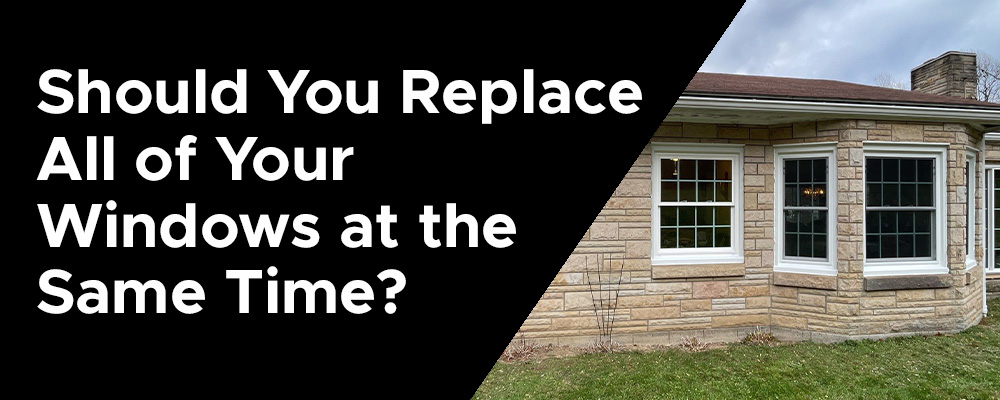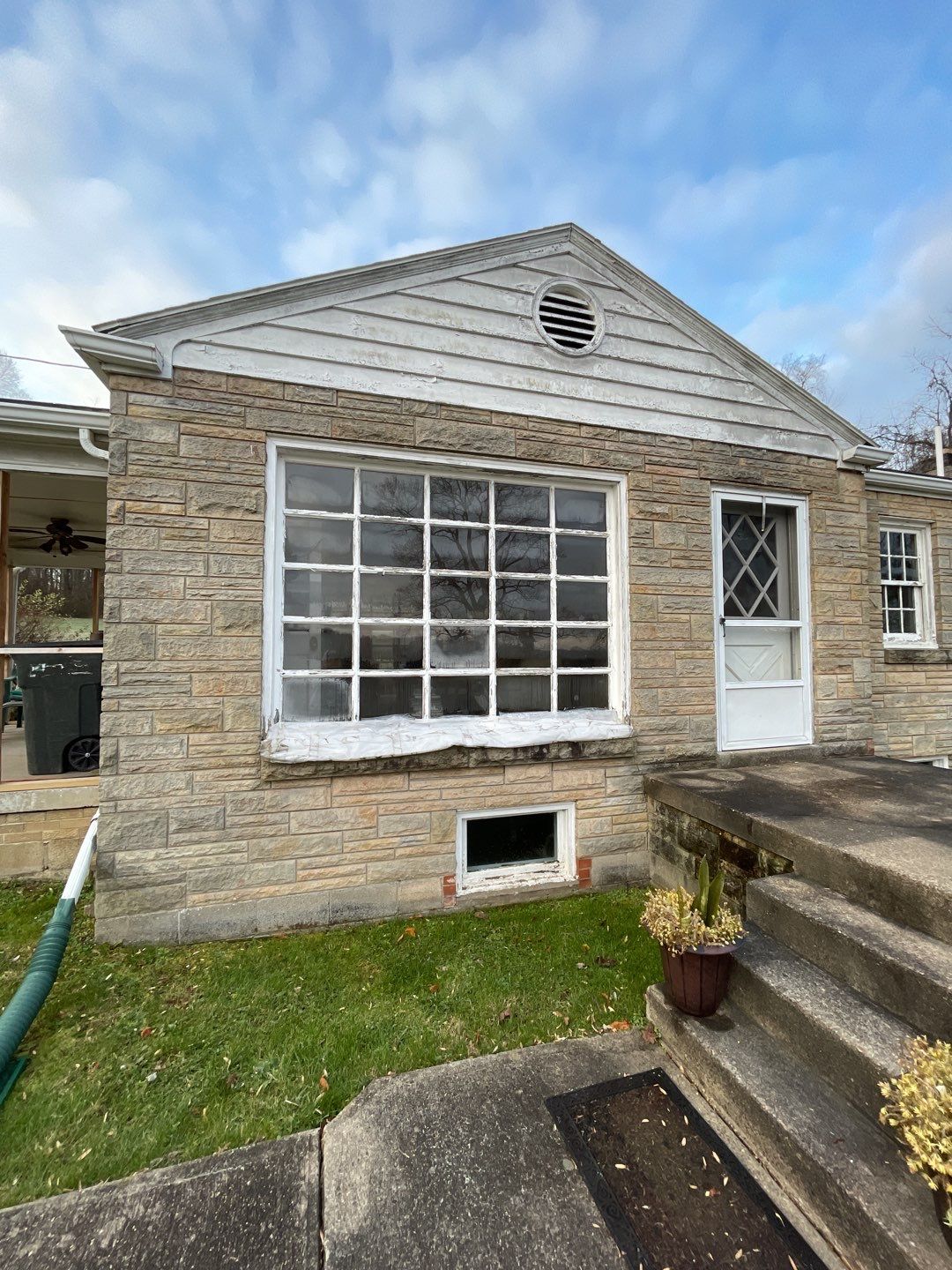Struggling to decide whether to replace all your windows or just a few? Are you wondering whether to replace just the worst ones, or tackle them all at once? You're not alone. Many homeowners face the same dilemma when considering home improvements. You might be worried that the upfront cost of replacing all the windows in your home is out of your budget. Or, you really want to handle this project in the most cost-effective way.
At Energy Swing Windows, we understand how confusing navigating a large (or small) window replacement project can be. With over 25 years of helping Pittsburgh homeowners make informed window replacement decisions, we’ve seen the benefits and drawbacks of both approaches.
This article will break down the signs that it’s time for window replacement, compare the pros and cons of full vs. phased replacements, and help you determine the best option for your home.
How Do You Know It’s Time to Replace Your Windows?
Before deciding how many windows to replace, it’s important to recognize when your windows are due for an upgrade. Here are some signs to watch for:
- Drafts and Air Leaks: If you feel cold or hot air seeping in, your windows might not be sealing properly.
- Condensation Between Panes: Foggy or misty glass often means the seal is broken, reducing energy efficiency.
- Trouble Opening or Closing: Windows that stick or won’t lock could indicate warped frames, faulty balances, or damaged hardware.
- Visible Damage: Cracked caulking, damaged frames, or rotting wood are clear signs of deterioration.
- Outdated Look: If your windows are bringing down your home’s appearance, it might be time for an update.
If these issues sound familiar, replacing your windows could improve comfort, appearance, and energy savings.
Is It Smart to Replace All Your Windows at Once?
Choosing a full window replacement offers several advantages:
- Uniform Appearance: All the windows will match, giving your home a cohesive and updated look inside and out.
- Improved Energy Efficiency: Replacing every window maximizes energy savings by eliminating all sources of air leaks.
- Labor and Cost Savings: Many companies offer quantity discounts for larger projects.
- Lock-in Prices: Material and labor costs tend to rise over time, making it more economical to complete the project now.
While replacing all your windows at once has clear benefits, it's also important to weigh the potential challenges. Let’s take a closer look at the pros and cons to help you make the best decision for your home.
What are the Pros and Cons of Replacing All My Windows at Once?
To help you better understand the advantages and challenges of replacing all your windows at once, here’s a simple comparison.
Will Replacing All My Windows Help Lower My Energy Bills?
Modern windows are designed to provide superior insulation. They have advanced features like low-emissivity (Low-E) coatings, double or triple panes, and insulated frames with modern weather-stripping.
According to the U.S Department of Energy, “upgrading to ENERGY STAR qualified window models can save you 7%-15% on annual household energy bills, or roughly $71-$501 annually, depending on your geographic location and the type of window being replaced.”
These elements reduce heat transfer, lower energy bills, and help your home stay comfortable year-round. By replacing all your windows, you ensure your entire home benefits from maximum energy savings.
Is Replacing All Windows at the Same Time More Cost Effective?
In most cases, yes! Larger projects often come with discounts, as contractors can work more efficiently when handling multiple windows at once. Additionally, you avoid future price increases by locking in the current rate of windows.
For homeowners in Pittsburgh, home styles and the number of windows vary greatly. Savings can range from 10-15% when replacing 15 or more windows at once. If your home is a smaller project and only has eight windows, it can still qualify for discounts, making it a worthwhile investment.
To provide flexibility, many companies offer monthly payment plans. This allows you to get all the window’s you need, at a monthly cost that is manageable. Plus, you get to lock in the current price.
Here’s an example of a quote for a home with 20 windows to be replaced.
Replacing All At Once- $28,000-$34,000
Two Year Plan:
Replacing 10 windows now: $15,000-$21,000
Replacing 10 windows one year later: $15,800-$22,100
TOTAL: $30,800-$43,100
Three Year Plan:
Replacing 7 windows now: $10,500-$15,400
Replacing 7 windows one year later: $11,100-$16,200
Replacing 6 windows two years later: $10,200-$14,600
TOTAL: $31,800-$46,200
In this chart, you can see each project plan broken out into their highest ranges and lowest ranges based on the years.
Can You Replace Windows in Phases?
Absolutely! If an entire replacement isn't currently feasible, phasing the project can be a good alternative. Many homeowners start by replacing the most damaged or inefficient windows first. Others may choose to update the front-facing windows for curb appeal while leaving back-facing windows for a later phase.
This method also allows you to take advantage of current tax credits offered to homeowners on a year-to-year basis.
Considerations for Phased Replacements:
- Design Consistency: It can be difficult to maintain a uniform look, especially if you plan to change window colors or styles.
- Rising Costs: Labor and material costs usually increase every year, so keep your timeline in mind for the next phase.
- Limited Discounts: Smaller projects may not qualify for bulk discounts, and most companies have a minimum window purchase as well.
Once you've decided on a replacement approach— all at once or in phases—the next step is choosing the right windows for your home. With so many options available, it's important to consider factors like energy efficiency, durability, and style to ensure a perfect fit.
How Do You Choose the Right Windows?
When selecting windows, consider factors like energy efficiency, material durability, and aesthetic appeal. Consulting with a window replacement professional can help you navigate your options. Be sure to ask about:
- Energy Star-Rated Windows: Maximize energy savings and qualify for the Energy Efficient Home Improvement Tax Credit.
- Frame Materials: Options range from vinyl, wood, or fiberglass.
- Customization: Select options like grid patterns and color choices
- Warranty Coverage: Ensure your investment (product and installation) is protected.
- Home Style: From brick Colonials in Mt. Lebanon to Craftsman-style homes in Highland Park, different homes have different window needs.
With a clear understanding of your window options and installation approach, the final step is making a decision that aligns with your home’s needs and budget.
What’s Next for Your Window Replacement Project?
At the end of the day, deciding whether to replace all of your windows at once or in phases is a big decision — and it’s one that depends on your budget, goals, and long-term plans. If you’re dealing with drafty, outdated windows, a full replacement can offer the most energy savings and improve your home’s comfort. On the other hand, a phased replacement may be a more manageable approach if you’re working within a tighter budget or want to spread out the investment over time.
The good news? You don’t have to figure it all out on your own. At Energy Swing Windows, we’ve spent over 25 years helping homeowners like you make informed decisions that fit their needs. Your next step: Try our Replacement Window Estimator to see the cost difference between replacing all your windows at once versus tackling the project in phases. And if you still have questions, we’re always here to help.




